Weekly deals: the best smartphone deals from the US, Germany, the UK and India

The long-awaited iPhone launch was this week and the newest models are already on pre-order – for the first time with USB-C. Other firsts include Apple’s first periscope (on the iPhone 15 Pro Max) and the first vanilla models with a Dynamic Island.
But there are no deals to be had on the new models, Apple isn’t feeling the pressure to offer pre-order goodies. That said, it’s worth having a look at the older models as some got price cuts, others got discontinued entirely (but are still available through third-party sellers).
There are a couple of new Android launches this week too. As for the older Androids, we're tracking their slide down the price ladder too.
 USA
USA
We’re not sure what happened – Amazon normally has tons of old iPhones to sell. Not this week, though, there were only refurbished units left. And Best Buy only had carrier deals on the iPhone 14 generation, no SIM-free options.
We did manage to find an iPhone 13 mini, which you can no longer get from Apple. The last mini was discontinued before a replacement arrived (presumably the next SE), so if you want a small iPhone it’s between an iPhone SE (2022) at $430 and an iPhone 13 mini for $630. But considering that you can get an iPhone 13 from Apple itself for $600, this doesn’t seem like a good price – we’d recommend holding off for a few weeks to see if the big retailers find more stock of the old models.
Besides the new iPhone 15 models, the AirPods Pro 2 also made the jump to USB-C. However, if you’re using an older iPhone with Lightning and you don’t want to switch to USB-C just yet, you can pick up the older model with a small discount.
Apple has been making a push to become a sustainable, eco-friendly company, so it’s no surprise that it dropped its leather cases. The replacement is the so-called FineWoven cases. These are made from recycled material and have a soft touch to them. Material aside, the cases are built pretty similar to the old leather cases. Also, they add some much-needed color to the pretty dull hues of the iPhone 15 series. The price is the same for all models, $60.
The Motorola Edge+ (2023) is one of the best that Android has to offer. With a Snapdragon 8 Gen 2 and a 6.67” 165Hz OLED with FHD+ resolution (and HDR10+, Dolby Vision support), this can handle anything you throw at it. The main camera has a 50MP 1/1.55” sensor with OIS, then there is a 50MP ultra wide (114°) and a 12MP 2x portrait cam, plus an impressive 60MP selfie camera. The battery has plenty of gas in the tank (5,100mAh) and supports 68W wired and 15W wireless charging.
There were no new iPads at the Wanderlust event, so if you’re looking for an Apple tablet, the options are the same as before. Two models from 2022 are the base iPad and the iPad Air, both with 10.9” displays with 1,640 ax 2,360px resolution and 60Hz refresh rate.
The Air is more powerful with an Apple M1 chip and double the RAM (8GB, plus it supports Stage Manager) and the display works with the 2nd generation Apple Pencil (the vanilla iPad uses the 1st gen Pencil). Other than that, the two are quite similar.
The Amazon Fire Max 11 is from earlier this year and it is now at a point where it gets discounts pretty regularly. You can grab it for $40 off from both Amazon itself or Best Buy. This is a cheap tablet that is built for streaming – it has an 11” IPS LCD (2,000 x 1,200px, 15:9) and stereo speakers. It has a slightly beefier MediaTek chipset than other Fires, so it can handle light gaming too and it has a large battery (14 hour battery life, according to official numbers) with 15W charging.
 Germany
Germany
The new iPhones are here, so the old iPhone 14 Pro pair is gone – at least gone from the Apple store. You can still find the phones at other retailers and at a lower price too.
Is the iPhone 15 Pro enough of an upgrade to justify paying €200 more than you would for a 14 Pro? The new model didn’t get a periscope like the Pro Max, so the only big upgrade are the new 3nm A17 chipset and the titanium frame (which makes it 19g lighter). And the USB-C port, of course, which is the way of the future for portable electronics.
As mentioned, the iPhone 15 Pro Max is equipped with Apple’s first periscope – it has 120mm focal length, up from 77mm on last year’s model. This is still short of the longest lenses on Android (e.g. the Galaxy S23 Ultra has a 230mm periscope) and crucially you lose the 3x lens, so mid-range zoom duties fall on the main camera, which got no upgrades this year. Still, the savings may not be worth it – you may as well pay the extra €140 and get Apple’s best camera yet.
Moving on to the vanilla models, while they got a Dynamic Island (finally!), the displays still run at 60Hz. That’s disappointing, but the new 48MP sensor supports 2x zoom natively – something that the non-Pros have always lacked. Also, the USB-C port on the iPhone 15 and 15 Plus may only be a USB-C 2.0 (480Mbps, compared to 10Gbps on the Pros), it still supports DisplayPort.
There’s also the “new” chipset on the iPhone 15 and 15 Plus, which is actually the iPhone 14 Pro and 14 Pro Max chipset from last year. It’s still a solid performance upgrade, though. At the end of the day it’s up to you to weigh the new upgrades over the lower costs of the iPhone 14 series.
Apple killed off the last mini but kept the SE around. The iPhone 13 mini can still be found at third-party retailers, but it costs nearly the same as the larger (and pricier) iPhone 13. Maybe these prices will fall, maybe they won’t – the 13 mini was the last properly petite high-end phone (it’s noticeably smaller than the Galaxy S23, Zenfone 10 and Xperia 5 V).
The iPhone SE (2022) is fairly small too, though you don’t get much screen size due to its old-fashioned design. Perhaps more importantly, the SE is cheap too – slightly cheaper on Amazon than it is on Apple.com (€530).
Keeping up with the old vs. new theme, the Nothing Phone (2) is slowly sliding down the price ladder – the 12/256GB model was €730 at launch, the top 12/512GB model was €850. Now they are €60 and €100 less respectively.
There is still a long way to go before it gets close to the Nothing Phone (1), however. That one has a lower class chipset (Snapdragon 778G+ vs. 8+ Gen 1) and display (6.5” OLED vs. 6.7” LTPO OLED, both FHD+ 120Hz). However, the camera setup is fairly similar and the battery on the second gen model is only 200mAh bigger (it does also supports faster charging, 45W vs. 33W).
The Sony Xperia 1 V price has fallen since launch too. Perhaps not to where we would want it to be, but still. This features the unique ExmorT sensor (48MP, 1/1.35”) with OIS and a similarly unique 85-128mm variable focal length tele camera (12MP sensor, OIS), plus a fairly standard 12MP ultra wide and 12MP selfie cameras. Just as importantly, Sony loaded this camera with several photo and video apps and even though the Auto stuff has been significantly improved, this is still a phone to get if you prefer to shoot in manual mode.
The Motorola Edge 40 is not strictly a gaming phone, even though it is equipped with a 6.55” 144Hz OLED panel (with HDR10+ support and FHD+ resolution). It also has a Dimensity 8020 chipset, which is a decent all-rounder, especially at this price. Also worth mentioning are the 50MP main camera (1/1.55”, OIS) with a 13MP ultra wide companion and 32MP selfie, plus a 4,400mAh battery that eked out a 98h endurance rating and supports 68W wired and 15W wireless charging.
New from this week is the Motorola Edge 40 Neo. It’s similar to the Edge 40 above, except it switches to a Dimensity 7030 chipset, which is less capable. The camera is mostly similar, though again with some cuts (e.g. no 4K video capture with the 32MP selfie camera, which the regular Edge 40 can do). The battery is bigger at 5,000mAh and still supports 68W wired charging, but it loses the wireless option. Another cutback is that there is no Ready For (Motorola’s desktop mode).
The Motorola Moto G23 still lives in a 4G world with its Helio G85 chipset, but it is an affordable model. If anything, the 6.5” IPS LCD is the bigger issue with its HD+ resolution (though the 90Hz refresh rate is nice). There’s a 50MP main camera and 5MP ultra wide (118°), plus a large 5,000mAh battery with 30W charging. The phone has expandable storage, stereo speakers and a 3.5mm headphone jack – not all that bad for a sub-€200 device.
 UK
UK
The vanilla iPhone 15 followed their Pro siblibgs in adoption the Dynamic Island (finally!), however, their displays still run at 60Hz. That’s disappointing, but the new 48MP sensor supports 2x zoom natively – something that the non-Pros have always lacked. Also, the USB-C port on the iPhone 15 and 15 Plus may only be a USB-C 2.0 (480Mbps, compared to 10Gbps on the Pros), it still supports DisplayPort.
There’s also the “new” chipset on the iPhone 15 and 15 Plus, which is actually the iPhone 14 Pro and 14 Pro Max chipset from last year. It’s still a solid performance upgrade, though. At the end of the day it’s up to you to weigh the new upgrades over the lower costs of the iPhone 14 series.
Apple killed off the last mini but kept the SE around. The iPhone 13 mini can still be found at third-party retailers, but it costs nearly the same as the larger (and pricier) iPhone 13. Maybe these prices will fall, maybe they won’t – the 13 mini was the last properly petite high-end phone (it’s noticeably smaller than the Galaxy S23, Zenfone 10 and Xperia 5 V).
Apple also released a new Ultra watch with an intensely bright 3,000 nits display, up from 2,000 nits on the original Apple Watch Ultra. The new model also has a new S9 chipset with better offline AI capabilities and double the storage (64GB), plus UWB 2 with direction finding. Still, these aren’t major upgrades, so you may want to consider getting the original Ultra at a lower cost.
The Nothing Phone (2) is slowly sliding down the price ladder – the top 12/512GB model was £700 at launch. Now it is down £40.
There is still a long way to go before it gets close to the Nothing Phone (1), however. That one has a lower class chipset (Snapdragon 778G+ vs. 8+ Gen 1) and display (6.5” OLED vs. 6.7” LTPO OLED, both FHD+ 120Hz). However, the camera setup is fairly similar and the battery on the second gen model is only 200mAh bigger (it also supports faster charging, 45W vs. 33W).
The Honor 90 Lite has a 100MP main camera, which is surprising for a sub-£200 phone. That is the highlight of the phone as the 5MP ultra wide and the 16MP selfie cam are nothing special. The Lite is powered by the Dimensity 6020 (so it’s a 5G phone) and a 4,500mAh battery with 35W wired charging. It has a 6.7” 90Hz IPS LCD with FHD+ resolution.
The Honor Pad 8 is quite cheap for its size – it has a 12” IPS LCD and not a bad panel either, it has 10-bit colors and 2,000 x 1,200px resolution (15:9). It’s only 60Hz, but that doesn’t matter for streaming video. What does is the impressive number of speakers on board, eight. This slate has a slender 6.9mm aluminum frame and weighs 520g, this is with a 7,250mAh battery.
You can go cheaper still with the Honor Pad X8. However, this one is smaller with a 10.1” LCD (19,200 x 1,200px, 16:10). It has stereo speakers and a smaller 5,100mAh battery inside the 7.6mm thick shell, which weighs 460g. The Pad X8 is also less powerful with an older MediaTek chipset compared to the Snapdragon 680 inside the Pad 8.
 India
India
The new iPhones are here, so the old iPhone 14 Pro pair is gone – at least gone from the Apple store. You can still find the phones at other retailers and at a lower price too.
Is the iPhone 15 Pro enough of an upgrade to justify paying ₹15,000 more than you would for a 14 Pro? The new model didn’t get a periscope like the Pro Max, so the only big upgrade are the new 3nm A17 chipset and the titanium frame (which makes it 19g lighter). And the USB-C port, of course, which is the way of the future for portable electronics.
As mentioned, the iPhone 15 Pro Max is equipped with Apple’s first periscope – it has 120mm focal length, up from 77mm on last year’s model. This is still short of the longest lenses on Android (e.g. the Galaxy S23 Ultra has a 230mm periscope) and crucially you lose the 3x lens, so mid-range zoom duties fall on the main camera, which got no upgrades this year. Still, the savings may not be worth it – you may as well pay the extra ₹16,000 and get Apple’s best camera yet.
Moving on to the vanilla models, while they got a Dynamic Island (finally!), the displays still run at 60Hz. That’s disappointing, but the new 48MP sensor supports 2x zoom natively – something that the non-Pros have always lacked. Also, the USB-C port on the iPhone 15 and 15 Plus may only be a USB-C 2.0 (480Mbps, compared to 10Gbps on the Pros), it still supports DisplayPort.
There’s also the “new” chipset on the iPhone 15 and 15 Plus, which is actually the iPhone 14 Pro and 14 Pro Max chipset from last year. It’s still a solid performance upgrade, though. At the end of the day it’s up to you to weigh the new upgrades over the lower costs of the iPhone 14 series.
Apple killed off the last mini but kept the SE around. The iPhone 13 mini can still be found at third-party retailers, but it costs nearly the same as the larger (and pricier) iPhone 13. Maybe these prices will fall, maybe they won’t – the 13 mini was the last properly petite high-end phone (it’s noticeably smaller than the Galaxy S23, Zenfone 10 and Xperia 5 V).
The iPhone SE (2022) is fairly small too, though you don’t get much screen size due to its old-fashioned design. Perhaps more importantly, the SE is cheap too – slightly cheaper on Amazon than it is on Apple.com (₹50,000).
Apple also released a new Ultra watch with an intensely bright 3,000 nits display, up from 2,000 nits on the original Apple Watch Ultra. The new model also has a new S9 chipset with better offline AI capabilities and double the storage (64GB), plus UWB 2 with direction finding. Still, these aren’t major upgrades, so you may want to consider getting the original Ultra at a lower cost.
Earlier this week the Honor 90 made its debut in India, marking the brand's return to the country after a 3-year hiatus. Sales start on September 18 (Monday at noon) and you can already check out the offers on Amazon, prices start at ₹38,000.

Honor 90 (coming Monday)
8/256GB₹3,000 instant bank discount available
₹2,000 extra discsount on exchange
Read our review
The iQOO 11 was the first Snapdragon 8 Gen 2 phone to reach India and it cost ₹60,000 for the 8/256GB model and ₹65,000 for the version with 16GB of RAM. Both are now ₹5,000 cheaper. Besides the chipset, this phone also boasts a huge 6.78” LTPO AMOLED display with QHD+ resolution, 144Hz refresh rate and 10-bit colors. It also has a 50MP main camera (1/1.57”, OIS), 13MP 2x portrait cam and an 8MP ultra wide. The 5,000mAh battery is screeching fast with 120W charging (it needs just 22 minutes for a full charge).
The Realme Narzo 60x and Samsung Galaxy F23 are fairly even in pricing. The Narzo has a slight edge in the screen department with a 6.72” IPS LCD (120Hz) compared to 6.6” LCD (120Hz) for the Galaxy, both FHD+. The chipsets are similar enough despite their different pedigrees (Dimensity 6100+ and Snapdragon 750G) and both phones have microSD slots. Both have 3.5mm jacks too.
They both have 50MP main cameras, but only the Samsung has an ultra wide (8MP, 123°). Both have 5,000mAh battery, but the Narzo has slightly faster charging (33W vs. 25W).
The Motorola Moto E13 and Nokia C12 are two Android Go edition phones that cost about the same, if you’re looking at the models with 2GB RAM. Both have HD+ 60Hz IPS LCDs (6.5” and 6.3”, respectively) and basic cameras (13/5MP, 8/8MP). The Moto has a much larger 5,000mAh battery (vs. 3,000mAh), though. Crucially, the Moto E13 has a version with 8GB of RAM and 128GB storage for ₹2,500 more – it’s not a small upcharge when we’re talking about ₹6,000 phones, but it’s a huge upgrade in capabilities. The Moto already had the much more capable chipset (12nm vs. 28nm and with two Cortex-A75 cores to boot).
The Xiaomi Pad 6 is equipped with a fast 11” IPS LCD – a 144Hz panel with 10-bit colors (HDR10, Dolby Vision) and it is quite sharp too with 2,880 x 1,800px resolution (16:9). It is powered by the old-but-gold Snapdragon 870 chipset and an 8,840mAh battery with 33W fast charging. There are 4 speakers on board.
We may get a commission from qualifying sales.
Reader comments
- Anonymous
- 18 Sep 2023
- N7K
No, 3 plus India 😂😂😂😂 Well thats where they get the most profit from afilliate links. The "deals" are not really even deals since you can get everything cheaper elsewhere, like it has been said (and deleted) multiple times...
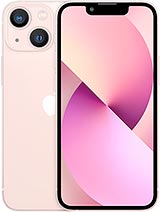





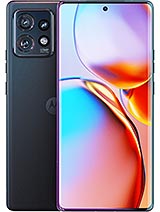

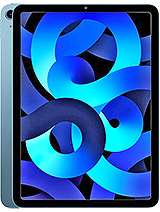
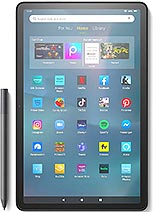
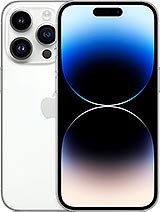
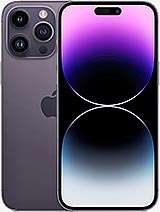
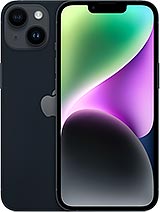

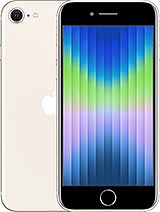


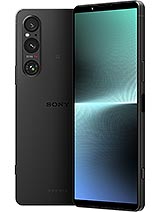



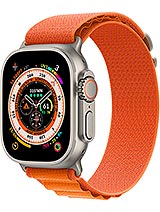



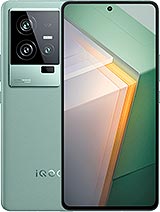
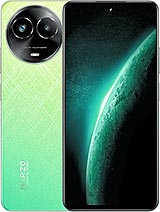



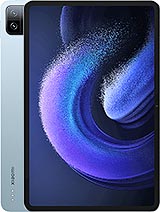




 Xiaomi
Xiaomi Samsung
Samsung Samsung
Samsung Nothing
Nothing OnePlus
OnePlus


